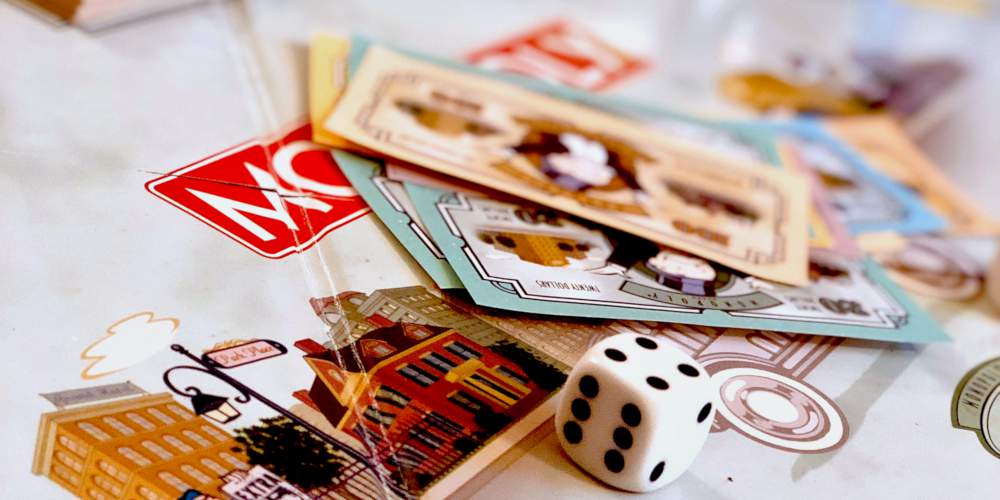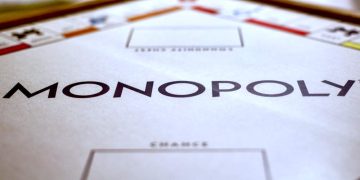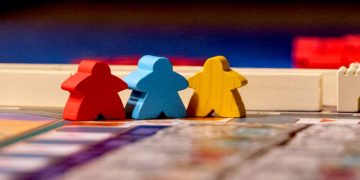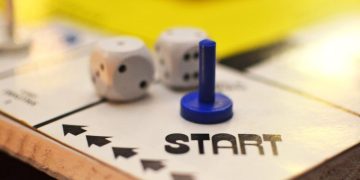Monopoly is one of the most polarizing board games in the world.
It's the kind of game that can make your day (when you win) or make you feel like a bitter anti-capitalist ready to revolt and change the world (when you lose).
While many people have fond memories of their times playing Monopoly with friends and family, more often than not, Monopoly is hated—because people don't quite understand how to win at it.
Want to beat your friends and family for once? Here's how to win at Monopoly, with simply strategies and tips that'll help you emerge victorious as King/Queen of the household.
Strategy Tip #1: Orange Is Best
Statistically, the best strategy in Monopoly is to build up orange properties. They really are the best bang for your buck.
Why? Because orange squares are on the street ahead of Jail. When any player lands in Jail, they have a good chance of landing on orange when they roll. And since orange properties are priced in the middle, building them up is relatively cheap and feasible.
For anyone who doesn't know Monopoly strategy, the orange properties will really sneak up on them—and newbies don't suspect the oranges until it's too late.
Strategy Tip #2: Red Is Always Solid
Red properties in Monopoly are extremely good value. They're the cheapest properties on the second half of the board, meaning they're pretty easy to afford and they have good returns. Plus, the red squares are the second-most common landing spots in the game.
And while orange properties are the most probable for anyone coming out of Jail, the red properties are a close second—it's within two rolls, and if they don't land in orange, they'll likely land in red.
Strategy Tip #3: Green and Yellow Are Next
Not able to purchase orange and red properties before other players gobble them up? You'll want to gun for green and yellow.
Both green and yellow are the most visited squares in the game after orange and red, with very similar landing rates. But yellow is slightly more visited than green, and green properties are more expensive than yellow properties, meaning yellow is a better value.
Strategy Tip #4: Forget Brown
Repeat after me: "The brown set doesn't exist." Brown properties are such low value that it just isn't worth the effort to buy them and build them up. Even with hotels, the returns are minimal.
And while having only two properties is easier to monopolize, they're also the least visited squares in the game. Statistically, the brown squares in Monopoly are the worst.
However, if you happen to land on them and they're free, you may want to buy them anyway for later. Just focus on other colors first, then come back to work on your browns. Dominating the market still requires you to control the lower markets, too.
Strategy Tip #5: Ignore Dark Blue
Yes, the dark blue properties look fancy. If you land on them, you'll get smacked with a financial sledgehammer. They're tempting!
But the statistical likelihood of landing on dark blue properties is relatively miniscule because there are only two of them. Not to mention that they're the most expensive properties in the game, and building them up will cost you a pretty fortune.
If you find yourself in a tight spot, buying dark blue properties can be OK—but use them for mortgaging or as leverage for trading. They're better than nothing when you're trying to trade for other squares.
Strategy Tip #6: Leave Utilities for Later
Honestly, the utility squares are a waste of space. You might be able to collect some cash with them, but not until the mid-game or late-game. On the first tour of the board, focus on buying land instead.
After the first or second tour, if there are unowned utilities, you can start thinking about grabbing them. But even if you do, never trade a utility for a property—the value just isn't there to make it worthwhile.
Strategy Tip #7: Buy Whenever You Can
Keeping all of the above tips in mind, the most important thing to do during your first tour of the Monopoly board is to buy up as many properties as you can—even if it means going low on cash.
Why? Because you want leverage.
Owning a property that somebody else wants—no matter what that property is—puts you in an advantageous position. It will tempt them to come to you for a trade, and you'll be the one holding the cards.
Holding property is also a good way to lock other players out of monopolies, which can force another player to trade with you when they have a property you want but aren't willing to give it away. It's a risky move, but it can pay off in your favor.
Strategy Tip #8: Build Fast and Early
One of the keys to winning in Monopoly is to build your properties as quickly as possible. Thoughtful strategy is important, but too much caution will hamper your chances of winning.
There's no point in sitting back and building one house at a time. By the time you've built anything meaningful, the other players will have had enough time to react and adapt to any advantage you held.
And even if you're lagging behind, the best way to catch up with everyone else is to build fast and recoup losses.
Strategy Tip #9: Invest in Monopolies
Let's say you've completed a monopoly set of orange squares, and you also hold two pink squares. Is it better to build up your orange properties or complete another monopoly?
When you're that close, always invest in the monopoly—as long as you won't be left too cash-poor in acquiring that last square. The pink properties may not be perfect, but better to have than have not.
Once you complete the pink set, you should definitely go back and build up the orange properties first, then develop the pink properties afterward. (And if you can complete red, you'll complete the "Infinitly Gauntlet" of Monopoly and become nearly unbeatable.)
Strategy Tip #10: Color Rankings & Stats
Want a quick and easy reference ranking of each color set by how likely it is that someone will land on them? Look no further. Here's what you need to know, if you want to make your own decisions:
- Orange (8.8% chance to land per roll)
- Red (8.7% chance to land per roll)
- Yellow (7.9% chance to land per roll)
- Green (7.8% chance to land per roll)
- Pink (7.5% chance to land per roll)
- Light Blue (6.8% chance to land per roll)
- Dark Blue (4.8% chance to land per roll)
- Brown (4.2% chance to land per roll)
Another tip that's useful for any board game with dice rolls: the most common roll result for a pair of dice is 7. It's six-times more likely than the least common roll results, which are 2 and 12.
Bonus Tip: Show No Mercy in Monopoly
This one's less of a strategy tip and more of a mantra to keep in mind: if any player asks you to lower the cost of payment when they owe you money, whether they ask politely or beg you desperately, don't give in.
Never accept less than the property demands. Never accept worthless properties as payment. If you're playing to win, then you can't "play nice" just so others can stay in the game.







